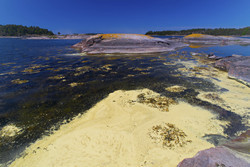Secrets of algal blooms revealed
Microscopic planktonic algae are found throughout the world's ocean, providing food for filter-feeding bivalve shellfish and the larvae of commercially important crustaceans and fish. The growth of planktonic algae is usually beneficial to aquaculture and wild fisheries, but under certain circumstances algal blooms can have a negative impact. The EU-funded MOHAB (Multidisciplinary modelling approaches to understand harmful algal blooms dynamics) project investigated the factors influencing HAB populations and behaviour. A two-fold approach based on field observations and computer modelling was used to understand HAB population dynamics. Case studies were carried out on two key algal species (Alexandrium fundyense and Alexandrium minutum) from different ecosystems. These field observations were integrated into a variety of simulation models for the two ecosystems. Researchers studied the effect of parasites on the development of spring algal blooms of A. fundyense. Results showed the importance of parasites in understanding the end of A. fundyense bloom. Laboratory experiments were conducted to determine important parameters for modelling the relationship between A. fundyense and its parasite Amoebophrya. Coupling physical effects with biological behaviour models provided valuable tools for understanding the complexity of HAB events and forecasting their initiation, intensity, duration and decline. However, biological models have remained basic due to a lack of data regarding the life history and behaviour patterns of HAB species. Project partners remedied this situation by developing advanced computer models to determine the main mechanisms and drivers behind the end of blooms. This information was used to develop indicators to help with decision making in environmental management. MOHAB results highlighted the importance of biological factors affecting the natural population dynamics of HAB species. An understanding of these dynamics is needed before implementing any mitigation and/or management actions, and calls for an integrated strategy that includes both observation and modelling. The project therefore provided greater understanding of the parasite-host relationship and key biological processes involved in the decline of HABs.
Keywords
Aquaculture, fisheries, harmful algal blooms, population dynamics, environmental management



